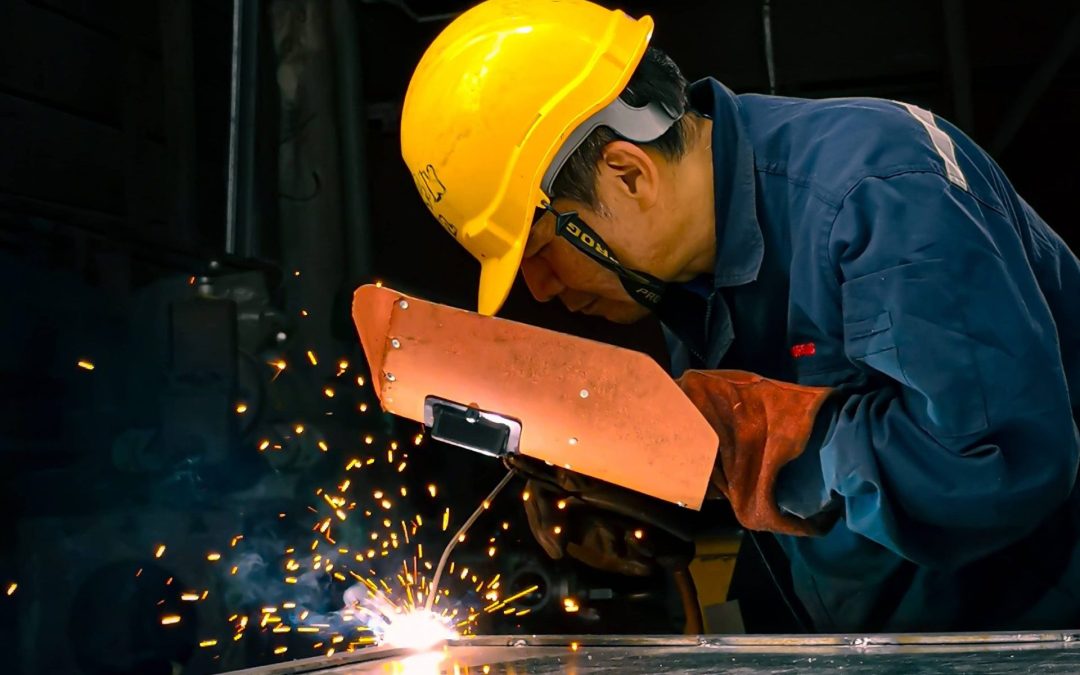There are two different types of welding that may be experienced in the workplace. There is fusion which refers to welding from just heat, there is also pressure welding, which is heat and pressure. Both have health risks associated with exposure. Welding fumes from metalwork can be toxic and can lead to a number of ailments if the correct safety precautions aren’t taken. There are a number of safety measures that can be taken, from keeping the workspace clean to ventilation systems removing contaminants from the air at the source.
What issues can exposure to welding fumes cause?
Without appropriate safety measures, continued exposure to welding fumes within the workplace can lead to short term issues such as dizziness, nausea and eyes, ears and throat irritation. Prolonged exposure can lead to irreversible lung damage and certain forms of cancer, as well as stomach ulcers, nervous system damage and kidney damage. It is for these reasons that it is especially important to make sure your workplace has appropriate ventilation that is working efficiently.
How can you protect yourself from welding fumes in the workplace?
There are many steps you can take when welding to ensure that you and your team are properly protected.
Keeping the area clean
Welding surfaces should be cleaned regularly in order to prevent a build-up of potentially toxic coatings like solvents or paints.
Correct positioning
Workers should position themselves in an area where they are not facing debris, fumes, or gases created in the welding process. Staying working in an open, well-ventilated area is ideal, as is working upwind of the welding debris.
Ventilation systems
Natural ventilation and open spaces cannot guarantee the safety of you and your team. Investing in and maintaining a Local Exhaust Ventilation (LEV) system is a sure way to ensure minimal exposure to the risks associated with welding.
How does LEV protect against welding fume risks?
LEV works to remove the welding fumes at the source, so they do not get a chance to go into the air or be breathed in by surrounding people. The hood of the LEV system should be placed over the source of contaminant and then the fumes are drawn away using a vacuum-based extraction system. This contaminated air should be filtered if it is being discharged into the workplace. If the contaminated air is being discharged externally, the air should be dispersed 3m above the roofline to ensure it cannot recirculate back in to the workplace.
How can you make sure your LEV is working effectively?
Having an LEV system will make a huge difference to the health of welders; however, there is a certain level of upkeep that must be undertaken to ensure it continues to work effectively.
Firstly you should be sure that your system has been installed by a competent LEV installer and that the system itself is well-designed for your space, the volume of work and the size of components being welded. At Vent-Tech we have a full consultation and design service to ensure that you will be able to get the most out of your LEV system for years to come. If you are unsure about the installation of your system, get in contact with one of our consultants who will be able to advise.
You must thoroughly examine and test your LEV every 14 months, and ensure it’s tested by a competent tester in accordance with COSHH regulation 6. A competent LEV tester will have a wealth of experience as well as the relevant certifications, such as P600, P601, P602, P603 and P604.
You may find it easier to do your LEV tests in house; if this idea is of interest, then Vent-Tech offers comprehensive training courses which will give you or a member of your team the insight they need to safely test, as well as the certification to prove this.
Welding fumes can be extremely dangerous when the correct precautions are not put in place. If you are interested in finding out more or have concerns about your current setup, then get in contact with the experts at Vent-Tech.


